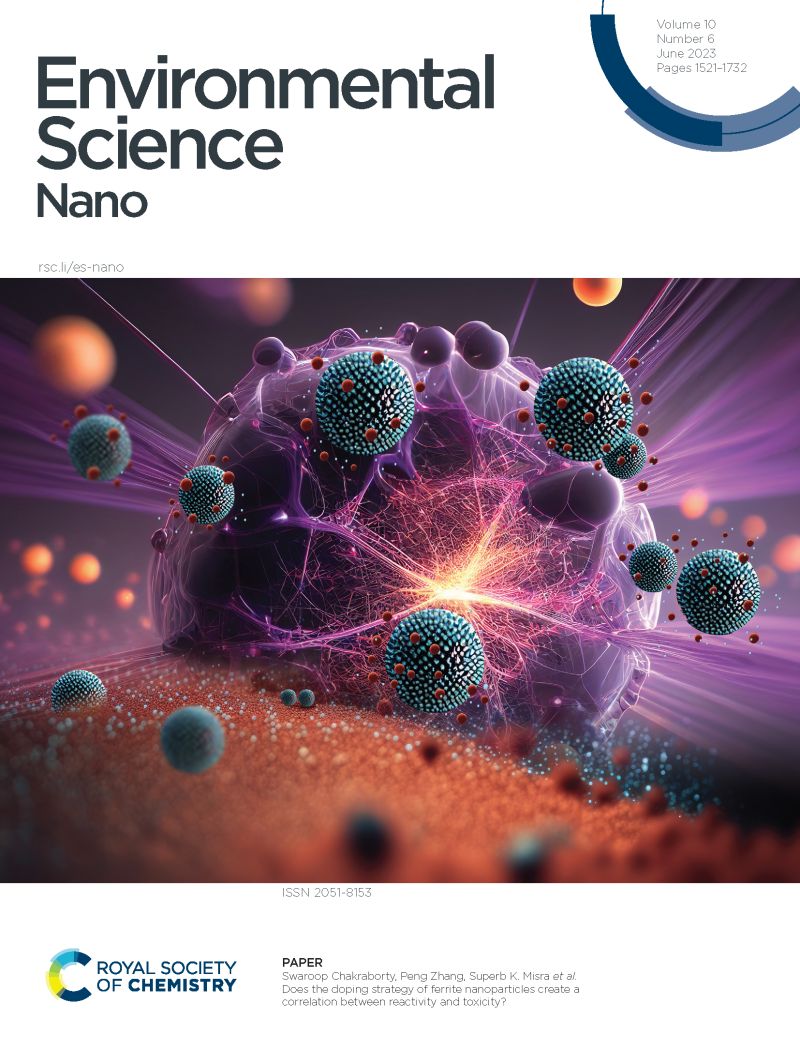Rational Cyano Functionalization of Copper Phenylacetylide Paves the Way for Superior Photogenerated Electron Transport Capability and Diclofenac Degradation
IF 5.1
2区 环境科学与生态学
Q1 CHEMISTRY, MULTIDISCIPLINARY
引用次数: 0
Abstract
Photocatalytic technology is a promising solution for effectively removing diclofenac (DCF) from wastewater. Herein, we report the theoretical design and solvothermal synthesis of a cyano-modified copper phenylacetylide (PhC2Cu) photocatalyst (Cy-PhC2Cu), addressing the bottleneck of rapid charge carrier recombination in pristine PhC2Cu. The strong electron-withdrawing nature of cyano (-CN) not only facilitates photogenerated electron transfer on copper(I) sites and induces oxygen activation but also lowers the valence band (VB) energy level, thereby promoting the generation of highly oxidizing holes (h⁺) to enhance the production of 1O2 . Characterizations confirm that doping of -CN exhibits a broadened light absorption range and superior photocatalytic activity toward DCF degradation under visible light. Specifically, Cy-PhC2Cu achieved a 97.0% DCF degradation rate within 100 min, which is 5.99 times higher in kinetics than pure PhC2Cu. In the photocatalytic process, electrons are excited by copper(I) and enter the benzene ring ligand through alkynyl groups. The presence of electron-deficient -CN can further capture these electrons, avoiding their rapid return to copper under strong coulomb forces within the molecule, resulting in effective exciton separation, which was confirmed by the combined results of photoluminescence (PL) spectra and density functional theory (DFT) calculations. This work demonstrates that rational functional group engineering paves the way for designing advanced photocatalysts with optimized optoelectronic transport for water treatment applications.合理的苯基乙酰铜氰基功能化为其光电子传输性能和双氯芬酸降解铺平了道路
光催化技术是有效去除废水中双氯芬酸(DCF)的一种很有前途的解决方案。本文报道了一种氰基改性苯乙基铜(PhC2Cu)光催化剂(Cy-PhC2Cu)的理论设计和溶剂热合成,解决了原始PhC2Cu中快速载流子重组的瓶颈。氰化物(-CN)的强吸电子性质不仅促进了铜(I)位点的光生电子转移,诱导氧活化,而且降低了价带(VB)能级,从而促进了高氧化空穴(h +)的生成,从而增强了1O2的生成。表征证实-CN的掺杂在可见光下对DCF的降解表现出更宽的光吸收范围和更好的光催化活性。具体而言,Cy-PhC2Cu在100 min内实现了97.0%的DCF降解率,动力学性能是纯PhC2Cu的5.99倍。在光催化过程中,电子被铜(I)激发,通过炔基进入苯环配体。缺电子-CN的存在可以进一步捕获这些电子,避免它们在分子内强库仑力的作用下快速返回到铜中,从而导致有效的激子分离,光致发光(PL)光谱和密度泛函理论(DFT)计算的联合结果证实了这一点。这项工作表明,合理的官能团工程为设计具有优化光电输运的先进光催化剂铺平了道路。
本文章由计算机程序翻译,如有差异,请以英文原文为准。
求助全文
约1分钟内获得全文
求助全文
来源期刊

Environmental Science: Nano
CHEMISTRY, MULTIDISCIPLINARY-ENVIRONMENTAL SCIENCES
CiteScore
12.20
自引率
5.50%
发文量
290
审稿时长
2.1 months
期刊介绍:
Environmental Science: Nano serves as a comprehensive and high-impact peer-reviewed source of information on the design and demonstration of engineered nanomaterials for environment-based applications. It also covers the interactions between engineered, natural, and incidental nanomaterials with biological and environmental systems. This scope includes, but is not limited to, the following topic areas:
Novel nanomaterial-based applications for water, air, soil, food, and energy sustainability
Nanomaterial interactions with biological systems and nanotoxicology
Environmental fate, reactivity, and transformations of nanoscale materials
Nanoscale processes in the environment
Sustainable nanotechnology including rational nanomaterial design, life cycle assessment, risk/benefit analysis
 求助内容:
求助内容: 应助结果提醒方式:
应助结果提醒方式:


